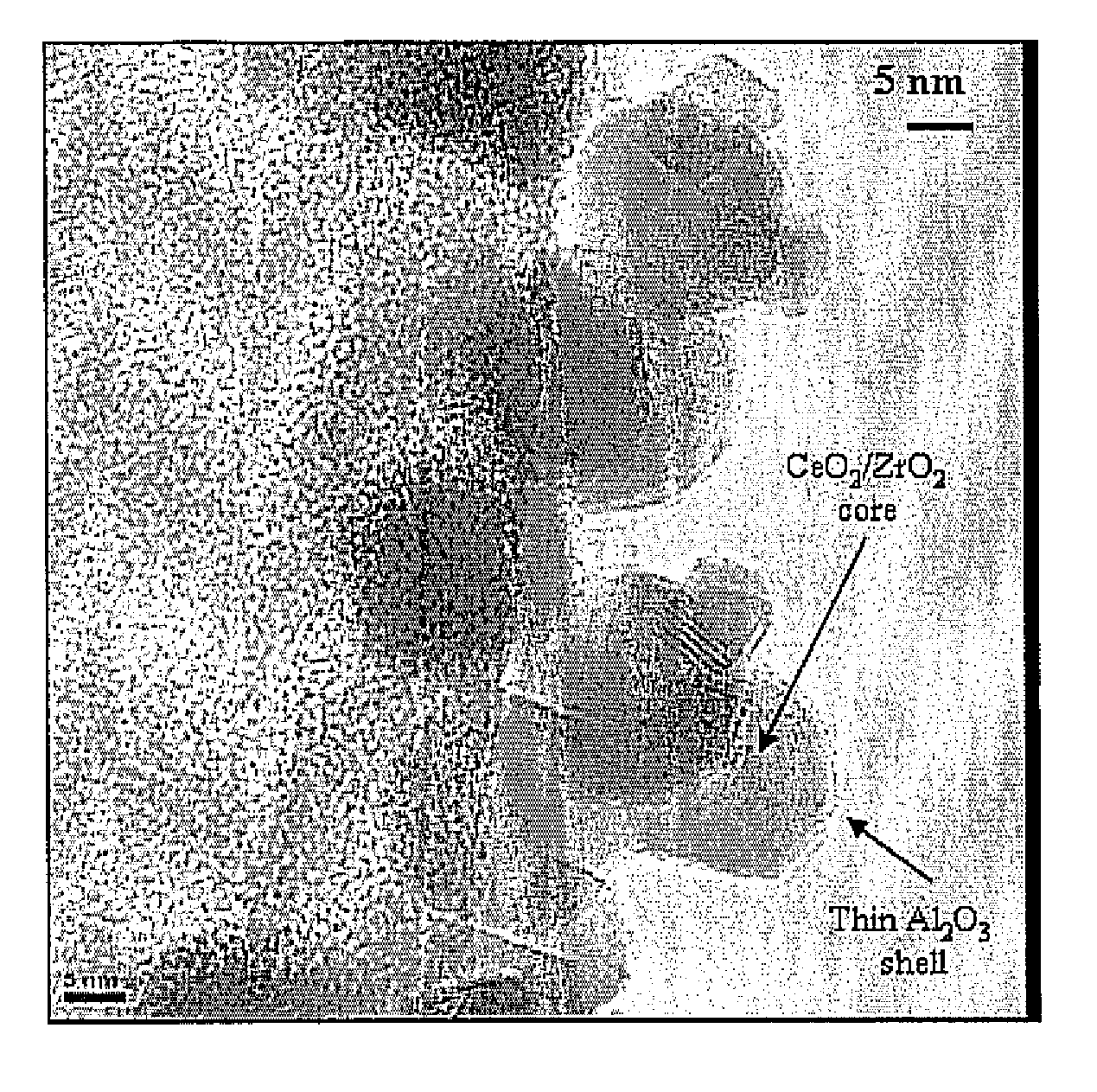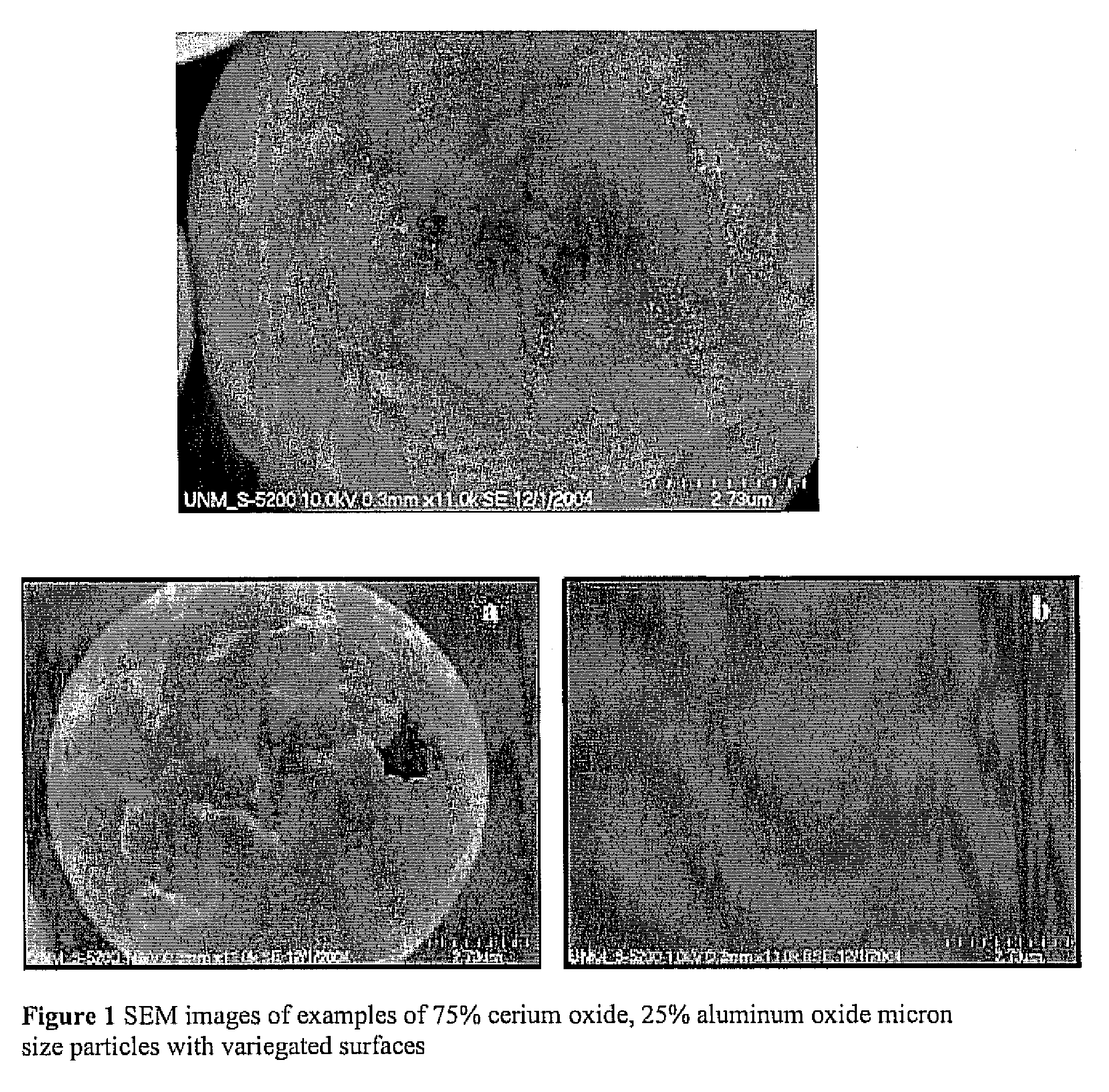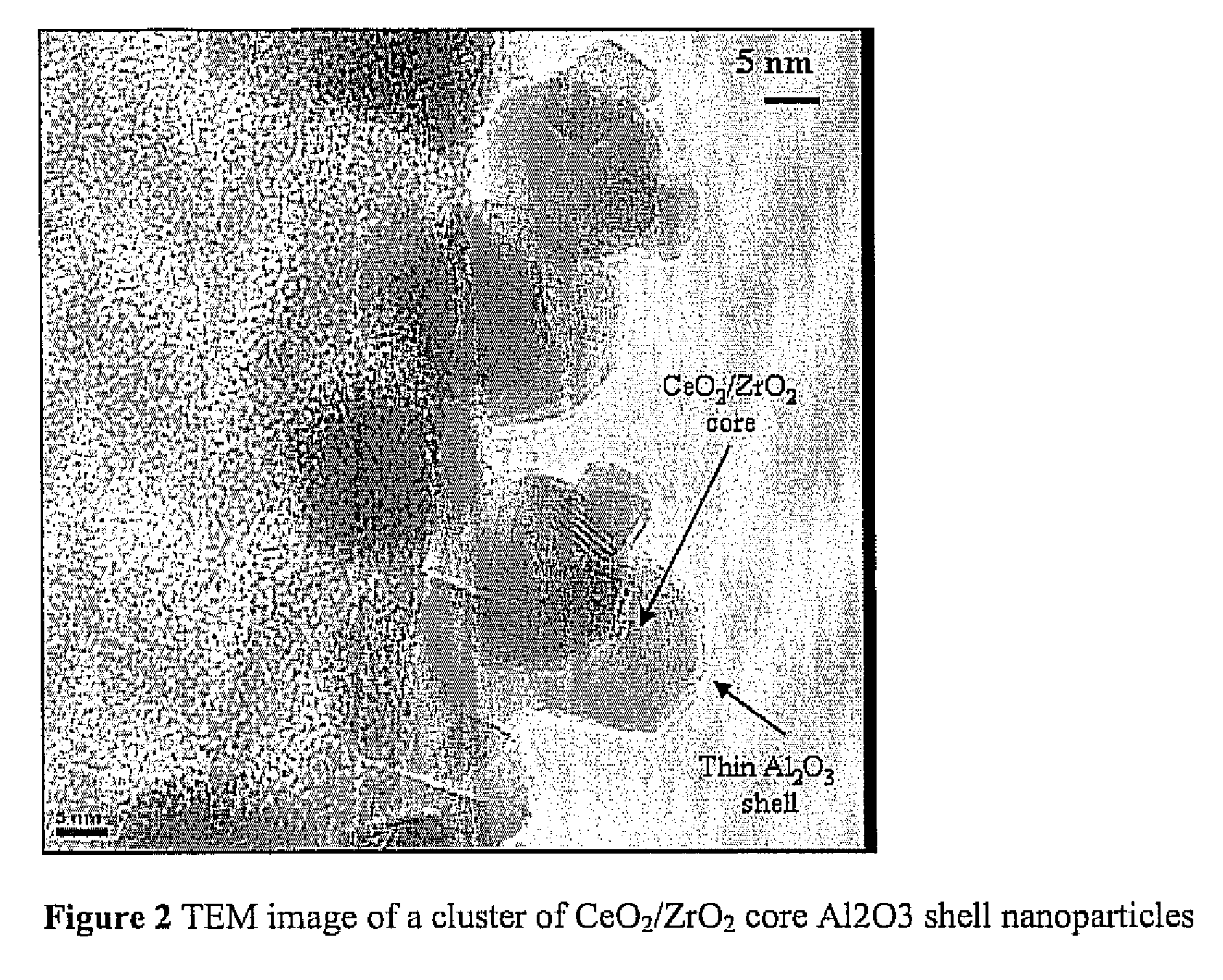Metal oxide nanoparticles and process for producing the same
a technology of metal oxide nanoparticles and nanoparticles, which is applied in the direction of metal/metal-oxide/metal-hydroxide catalysts, lanthanide oxides/hydroxides, etc., can solve the problems of precious metal sintering and severe reduction in the catalyst efficiency
- Summary
- Abstract
- Description
- Claims
- Application Information
AI Technical Summary
Benefits of technology
Problems solved by technology
Method used
Image
Examples
examples
[0035] Plasma Torch—The torch system employed in the examples is shown in FIG. 4. For liquid precursors, a modification in the feed system was introduced. An ultrasonic bath was used in order to produce a mist that was then swept into the torch via the carrier gas. In general, 900 Watts of microwave power was used with an argon plasma gas flow rate of 2.5 slpm. A combination of argon and oxygen was used as an aerosol carrier gas, with 0.52 slpm (Ar) and 5-6 slpm (O2) In a few cases, as indicated, 500 Watts were used and / or pure argon was employed as the carrier gas.
[0036] Methods of Generation—Different precursor routes were employed. In one case a dry powder aerosol was used, and in another an aqueous solution containing dissolved salts was passed directly through the torch. In all cases reported herein the molar ratio of aluminum / cerium in the precursor was 1:1.
[0037] The precursors for the first dry aerosol technique (Method B) were from an equimolar Ce / Al aqueous solution that...
PUM
| Property | Measurement | Unit |
|---|---|---|
| particle size | aaaaa | aaaaa |
| flow rate | aaaaa | aaaaa |
| power | aaaaa | aaaaa |
Abstract
Description
Claims
Application Information
 Login to View More
Login to View More - R&D
- Intellectual Property
- Life Sciences
- Materials
- Tech Scout
- Unparalleled Data Quality
- Higher Quality Content
- 60% Fewer Hallucinations
Browse by: Latest US Patents, China's latest patents, Technical Efficacy Thesaurus, Application Domain, Technology Topic, Popular Technical Reports.
© 2025 PatSnap. All rights reserved.Legal|Privacy policy|Modern Slavery Act Transparency Statement|Sitemap|About US| Contact US: help@patsnap.com



